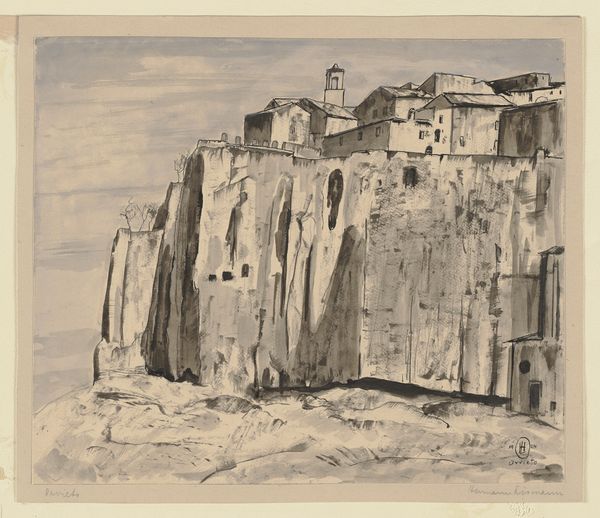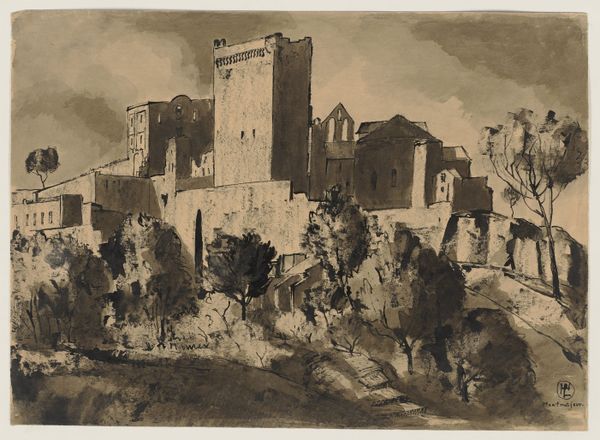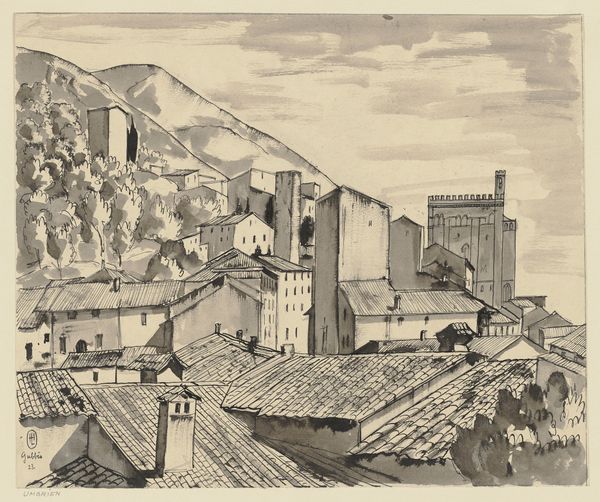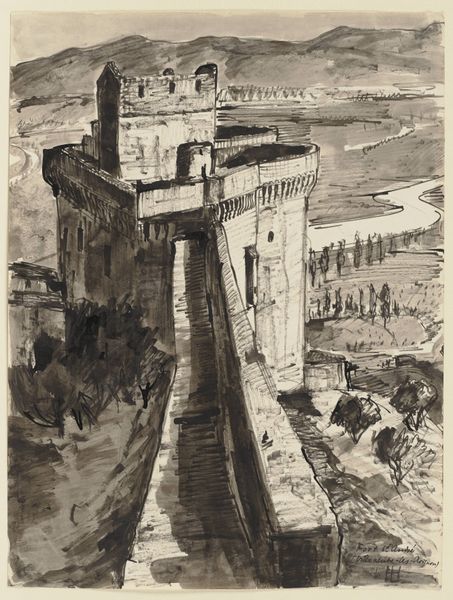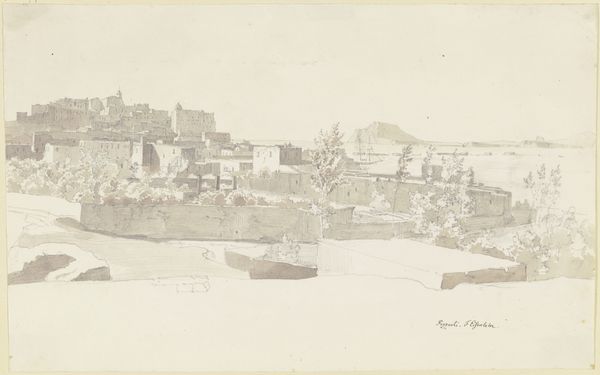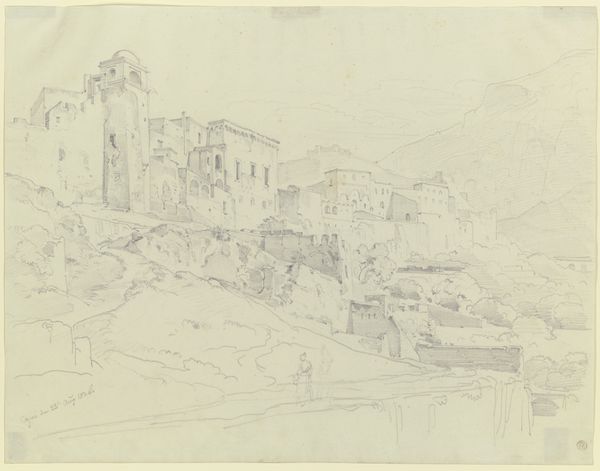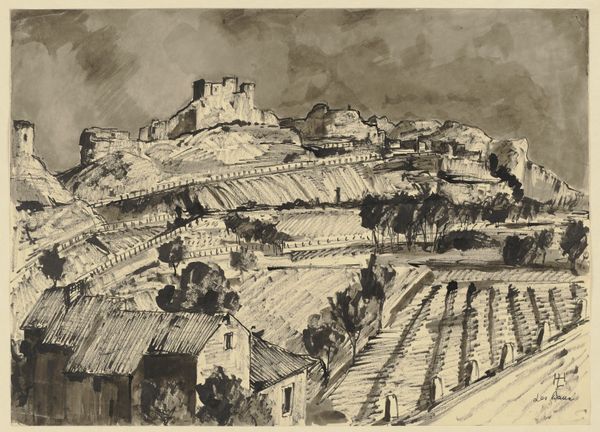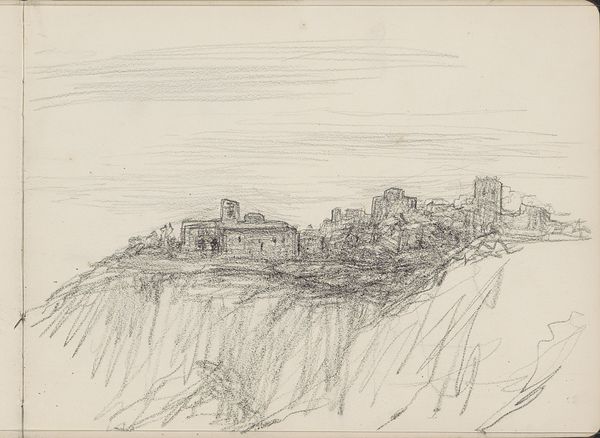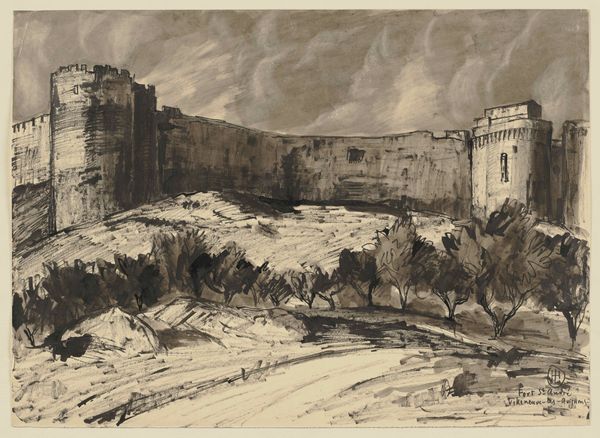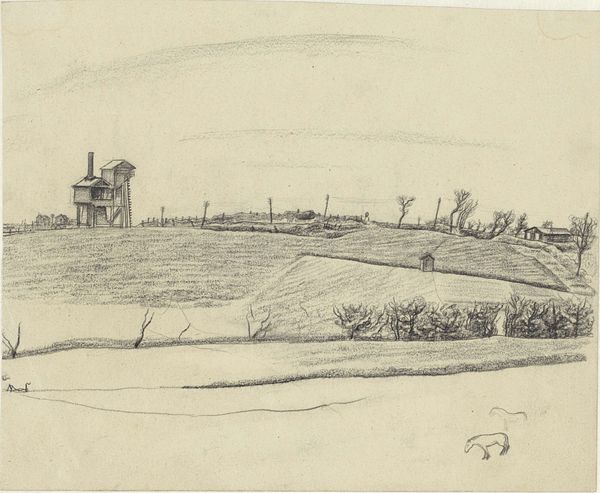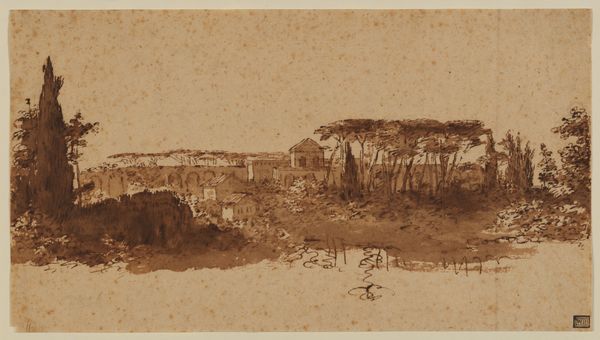
drawing, ink, indian-ink
#
17_20th-century
#
architectural sketch
#
landscape illustration sketch
#
drawing
#
quirky sketch
#
mechanical pen drawing
#
pen sketch
#
sketch book
#
personal sketchbook
#
ink
#
german
#
sketchwork
#
indian-ink
#
pen-ink sketch
#
pen work
Copyright: Public Domain
Curator: This is Hermann Lismann’s 1911 Indian ink drawing, "Villeneuve-les-Avignon," currently residing in the Städel Museum. Editor: Stark and imposing. There's a formidable weight to that central tower. The limited tonal range lends it a powerful, almost ominous, quality. Curator: Lismann clearly prioritizes the monumental character of the fortified city, yes. Observe how the steep hillside and dominant architecture—particularly that square tower you noted—command our view, reflecting enduring symbols of authority. Editor: And that sketch-like quality, with the raw strokes of ink, gives a wonderful immediacy. See how the trees in the foreground are simply suggested, almost placeholders, contrasting with the sharp, deliberate lines of the citadel above. The river mirroring the landscape gives depth but feels subdued under the heavy sky. Curator: Yes, this wasn’t about detailed architectural representation, but about capturing the psychological impact of Villeneuve. Consider that the drawing’s mood can also be tied to a pre-war European sentiment, hinting at looming conflict and established power. Editor: Perhaps. Though I also see an artist working rapidly, exploring light and shadow, reducing a complex subject to its essential forms. The pen work has a wonderful tactile feel; the controlled, repetitive strokes across the hillside give a strong sense of mass. It’s as if he is trying to physically grasp the essence of the place. Curator: That direct engagement emphasizes what persists across generations. Think of Villeneuve as a visual echo through time—each stone whispering its story to successive inhabitants. Lismann offers more than just an aesthetic encounter. Editor: True, its power comes precisely from this balance: formal simplicity alongside the city's visual resonance. It becomes not just a portrait, but also an emotional record. Curator: Indeed, this piece quietly acknowledges that historical narratives are inherently woven into even our immediate visual experiences. Editor: I’ll be looking at Lismann's formal techniques for grasping a place differently now.
Comments
No comments
Be the first to comment and join the conversation on the ultimate creative platform.

